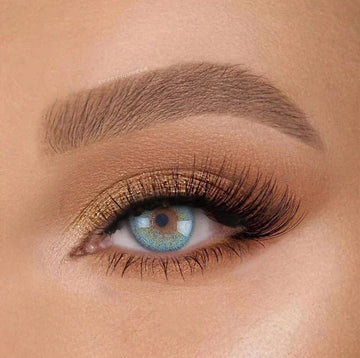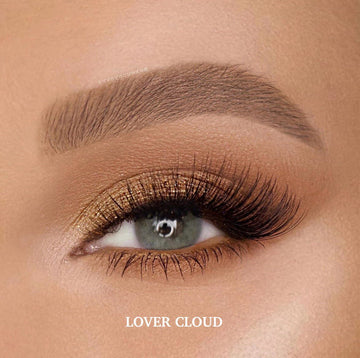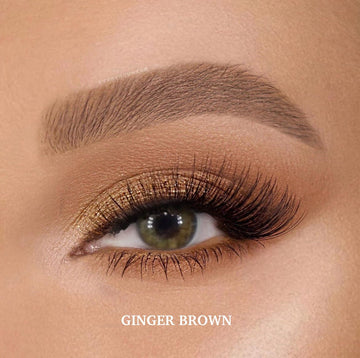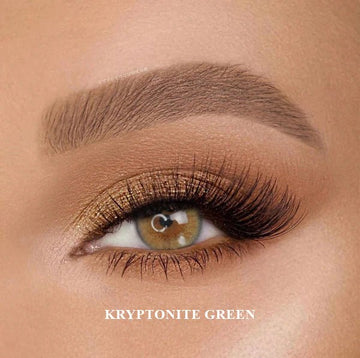How To Tell Which Coloured Contact Lenses Are the Best
If you thought choosing the best coloured contact lenses was just about picking a pretty colour and hoping they feel comfortable, you would be missing the most important part. The real difference between good lenses and great lenses comes from the technology you cannot see.
Most people do not know what lens material means, how the colour is placed inside the lens, why edge design affects dryness, or how pupil size impacts night time vision. But these hidden features completely change how natural the colour looks, how bright it appears on dark eyes, how soft and breathable the lens feels, and how long you can wear it safely.
This guide breaks everything down in simple language so you know exactly what to look for when choosing the best coloured contact lenses for both colour clarity and comfort.
1. Material: Hydrogel and Silicone Hydrogel
There are many different soft lens formulas, but almost all coloured contacts are made from either hydrogel or silicone hydrogel materials. Popular coloured lens families like Air Optix Colors, Solotica Hidrocor and Acuvue Define all sit in these material groups.
Hydrogel
- Soft and gentle
- High water content
- Great for sensitive eyes
- Best for shorter or casual wear 4-8 hours.
Silicone Hydrogel
- More advanced and breathable
- Allows more oxygen to reach your eyes
- Helps reduce redness and dryness
- Better for long, all day wear
Air Optix Colors sit in the silicone hydrogel category, while ranges like Solotica Hidrocor and Acuvue Define use hydrogel materials with their own moisture systems and designs.
Otaku offers both hydrogel and silicone hydrogel options, so you can choose based on your eye sensitivity and daily routine.
2. Sandwich Technology: Where the Colour Sits

The next important factor is how the colour is placed in the lens. Cheap lenses often print the colour on the surface of the lens. Every time you blink, your eyelid rubs against that printed layer.
Surface printed lenses can cause:
- Scratching or irritation
- Dryness and discomfort
- Uneven colour and faster fading
- Light scatter that makes vision less clear
Premium brands like Air Optix Colors and Acuvue Define use internal pigment or sandwich style technology so the colour is protected inside the lens, not exposed on the surface.
Premium lenses use what is called "sandwich technology". The pigment is placed safely between two layers of clear lens material. The parts that touch your eye and eyelid stay smooth and clean.
Otaku uses an upgraded, patented version called Plusierus technology. This is a premium type of sandwich technology that:
- Keeps the surface of the lens smooth
- Locks the colour inside the lens material
- Helps protect your eye from direct contact with pigment
- Improves comfort and colour stability over time
3. Edge Design: Why the Edge Changes How Lenses Feel

Your eyelid touches the edge of your lens with every blink. If the edge is thick, blunt or uneven, your eyes will feel tired and dry much faster.
Poor edge design can lead to:
- That constant feeling that you can "feel" the lens
- More friction with each blink
- Extra dryness by the end of the day
Some coloured lenses focus heavily on colour and opacity but still use standard, thicker edges. This can be one reason why some high opacity lenses feel less comfortable over time.
Otaku lenses use an advanced three curve tapered edge design. This creates a thinner, softer and smoother edge around the lens.
The result is:
- Less rubbing between your eyelid and the lens
- A lighter, more natural feeling on the eye
- Better comfort for longer wear
This is one of the hidden features that customers often cannot name, but they feel the difference.
4. Colour Performance: Natural Blending and Strong Opacity
Now let us look at how different well known brands approach colour.
Solotica Hidrocor
- Very high opacity that can completely cover dark brown eyes
- Famous for dramatic colour change
- Can appear less natural or more "printed" in some shades
- Often feels thicker due to strong pigment layers
Air Optix Colors
- Medium to high opacity with a three ring design
- Uses a bright outer ring and inner highlight
- Colour can look bold and defined rather than soft
- Some people feel the colours are more striking than natural
Acuvue Define
- Low opacity, designed as an enhancement lens
- Adds definition to the limbal ring
- Does not fully change brown eyes to a new colour
- Ideal if you only want subtle enlargement and sparkle
Otaku lenses aim for the best of both worlds. Our designs:
- Blend softly into your natural eye for a more realistic look
- Use layered tones to create a three dimensional effect
- Have enough opacity to show clearly on dark brown eyes
- Avoid a harsh "sticker like" ring around the iris
5. Pupil Hole Design: Colour vs Vision Safety
Your pupils are not always the same size. They expand in low light and shrink in bright light. This means the size and shape of the pupil opening in your coloured lenses is very important.
If the pupil opening is too small, it can:
- Block part of your vision
- Cause a tunnel vision effect in dim light
- Make night driving or evening activities uncomfortable
Some very opaque designs, like certain shades of high opacity lenses, use smaller pupil openings to hide more of the natural eye colour. This can look very seamless in photos but may affect vision in real life when your pupil expands in the dark.
If the opening is too large, it can:
- Show more of your natural eye colour in the centre
- Make the colour change look less even
Otaku uses a natural star blended pupil design. Instead of a hard circle edge, the colour fades in a soft, star like pattern into your real pupil and iris.
This design:
- Blends the lens colour into your natural eye without a harsh line
- Helps create a three dimensional, more realistic look
- Allows your pupil to expand without blocking your vision
- Gives good coverage without sacrificing safety or clarity
6. Visual Clarity: Why a Smooth Surface Matters
Vision clarity is not only about the prescription. The surface of the lens also controls how light enters your eye.
If a lens has rough pigment on the surface or uneven layers, it can:
- Scatter light
- Make your vision feel slightly hazy
- Reduce how crisp colours and details look
Brands that keep pigment sealed inside the lens and focus on a smooth surface, like Otaku and enhancement ranges such as Acuvue Define, support clearer vision and all day comfort.
Because Otaku lenses use internal pigment placement and a smooth three curve edge, the surface stays clean and even. This helps:
- Keep your vision clear throughout the day
- Make the colour appear bright and even
- Support both comfort and clarity at the same time
7. Comparison: Otaku vs Other Popular Lens Types
| Feature | Otaku Lens | Air Optix Colors | Solotica Hidrocor | Acuvue Define |
|---|---|---|---|---|
| Best For | Comfort and natural 3D colour with strong coverage | All round balance of comfort and colour | Dramatic high opacity colour change | Subtle, natural definition |
| Material | Hydrogel and silicone hydrogel options | Silicone hydrogel | Hydrogel | Hydrogel |
| Colour Placement | Plusierus patented sandwich technology | Three in one internal colour design | High opacity pigment layers | Internal pigment within the lens |
| Edge Design | Advanced three curve thin edge | Standard soft lens edge | Standard soft lens edge | Smooth soft lens edge |
| Opacity | Medium high with natural blending | Medium high | Very high, can look flat | Low to medium enhancement |
| Pupil Design | Natural star blended pupil | Feathered inner ring | Often a tighter, smaller pupil opening | Larger enhancement style pupil opening |
| Comfort | High comfort for regular wear | High comfort for regular wear | Can feel thicker or drier for some wearers | Comfortable but with subtle colour change |
| Best for Dark Eyes | Yes, strong yet natural transformation | Yes, good transformation | Yes, very strong transformation | Gives a soft enhancement only |
8. What Actually Makes the Best Coloured Contact Lens
If you want the best coloured contacts for both colour clarity and comfort, you should look beyond just the swatch photo. The most important questions to ask are:
- Is the lens made from hydrogel or silicone hydrogel that suits my eyes and wear time
- Is the colour sealed inside the lens with sandwich technology
- Does it use a smooth, thin edge design that feels light on my eyes
- Does the colour blend naturally while still showing on dark eyes
- Is the pupil opening designed to balance coverage and safe vision
- Does the lens stay clear and comfortable beyond the first few hours
These are the reasons Otaku lenses are often described as the best of both worlds. You get natural looking, three dimensional colour that still shows up beautifully on dark brown eyes, with comfort features that are on the same level as popular brands like Air Optix Colors, Solotica and Acuvue, and in many cases go further in terms of design, blending and everyday comfort.
FAQ
Are silicone hydrogel coloured contacts better for comfort
Silicone hydrogel lenses allow more oxygen to reach your eyes, which can help keep them whiter, clearer and more comfortable, especially for long wear. Many people find silicone hydrogel better if they wear lenses for most of the day.
Why is sandwich technology important in coloured contacts
Sandwich technology keeps the pigment locked inside the lens material so the colour does not rub directly against your eye or eyelid. This helps protect your eyes and keeps the surface smooth for better comfort and clearer vision.
Why does pupil design matter in coloured lenses
Your pupils change size in different lighting. If the pupil opening is too small, it can block part of your vision in low light. A blended pupil design, like the natural star effect used in Otaku lenses, allows you to see clearly while still giving good colour coverage.














